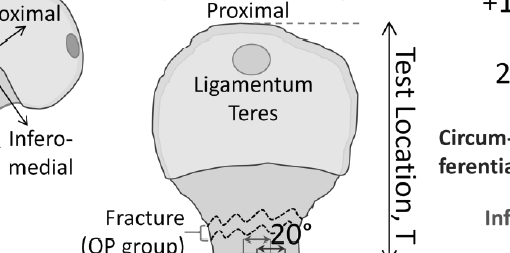Abstract
CONTEXT:
Skeletal deterioration, leading to an increased risk of fracture, is a known complication of type 2 diabetes mellitus (T2D). Yet plausible mechanisms to account for skeletal fragility in T2D have not been clearly established.
OBJECTIVE:
The objective of the study was to determine whether bone material properties, as measured by reference point indentation, and advanced glycation endproducts (AGEs), as determined by skin autofluorescence (SAF), are related in patients with T2D.
DESIGN:
This was a cross-sectional study.
SETTING:
The study was conducted at a tertiary medical center.
PATIENTS:
Sixteen postmenopausal women with T2D and 19 matched controls participated in the study.
MAIN OUTCOME MEASURES:
Bone material strength index (BMSi) by in vivo reference point indentation, AGE accumulation by SAF, and circulating bone turnover markers were measured.
RESULTS:
BMSi was reduced by 9.2% in T2D (P = .02) and was inversely associated with the duration of T2D (r = -0.68, P = .004). Increased SAF was associated with reduced BMSi (r = -0.65, P = .006) and lower bone formation marker procollagen type 1 amino-terminal propeptide (r = -0.63, P = .01) in T2D, whereas no associations were seen in controls. SAF accounted for 26% of the age-adjusted variance in BMSi in T2D (P = .03).
CONCLUSIONS:
Bone material properties are impaired in postmenopausal women with T2D as determined by reference point indentation. The results suggest a role for the accumulation of AGEs to account for inferior BMSi in T2D.
https://www.ncbi.nlm.nih.gov/pubmed/27115060
J Clin Endocrinol Metab. 2016 Jun;101(6):2502-10. doi: 10.1210/jc.2016-1437. Epub 2016 Apr 26.


